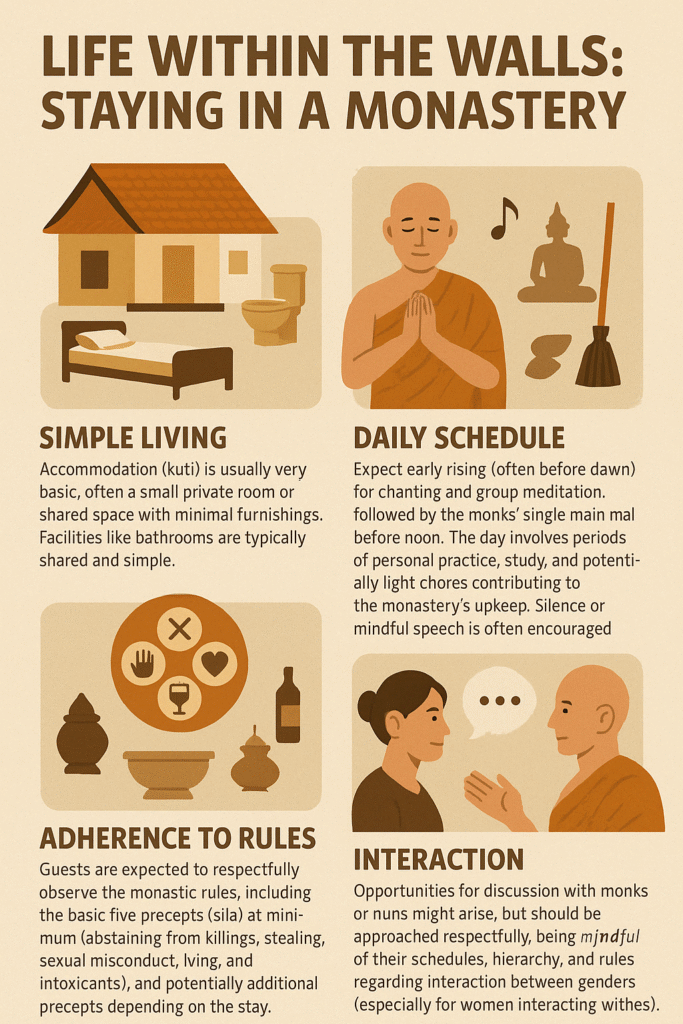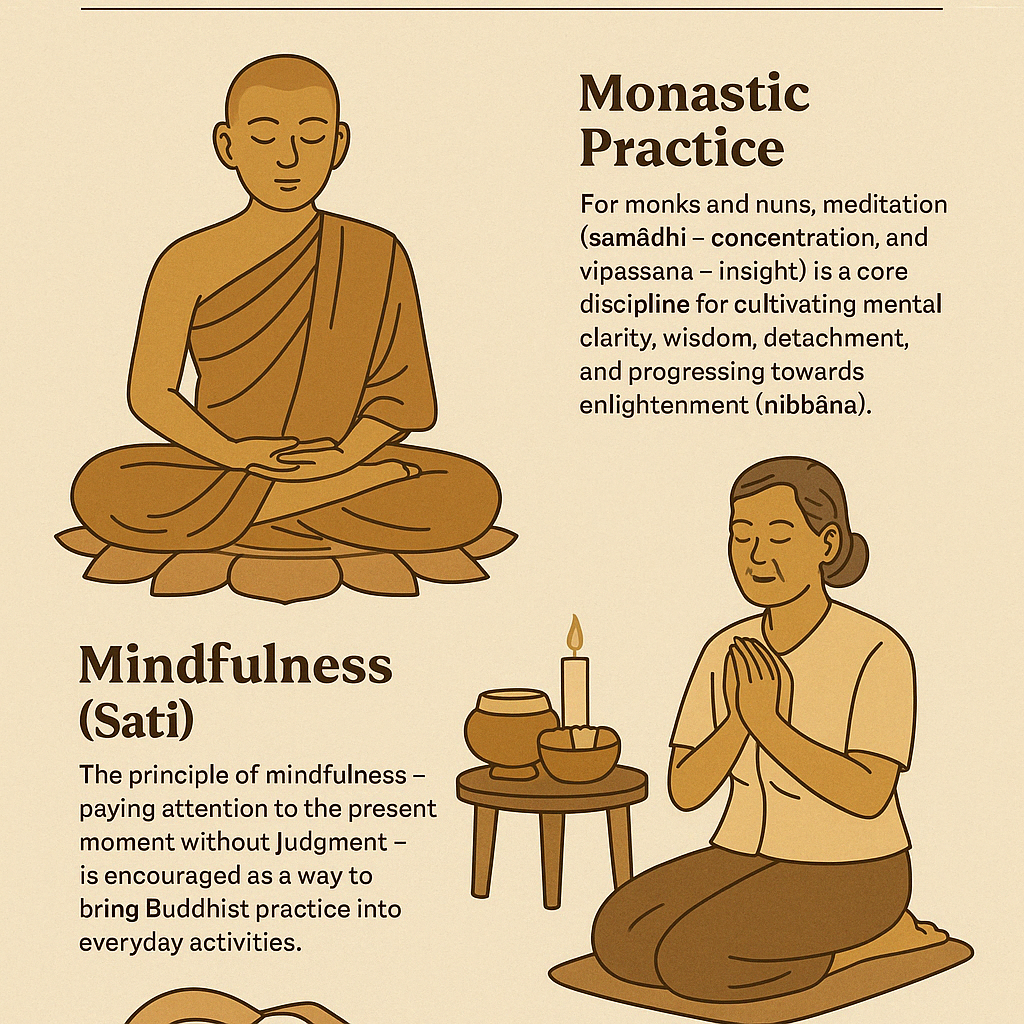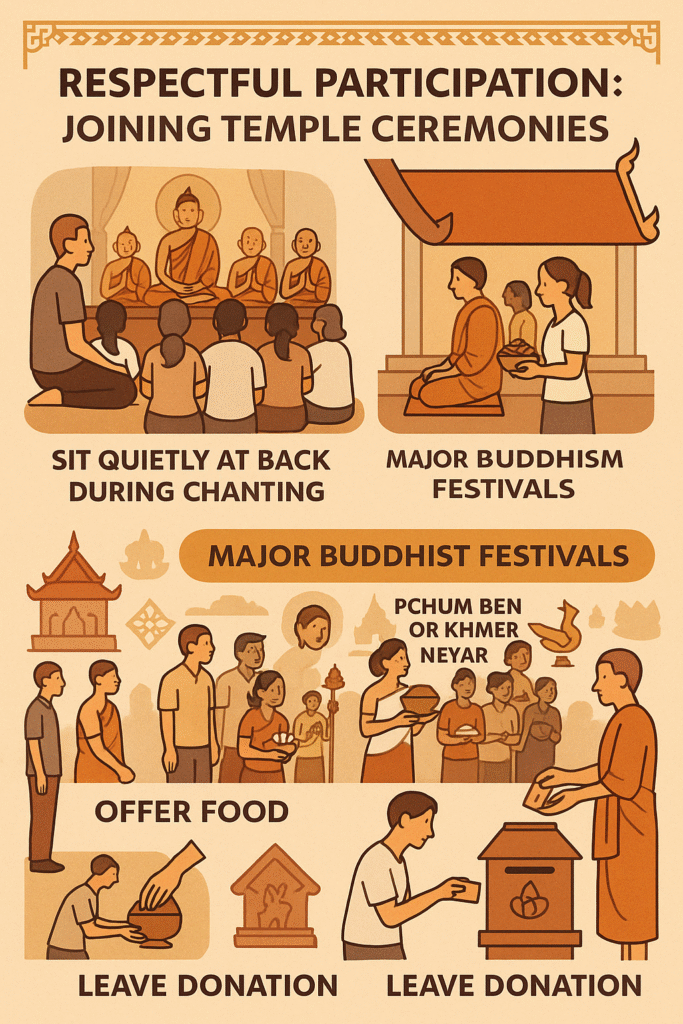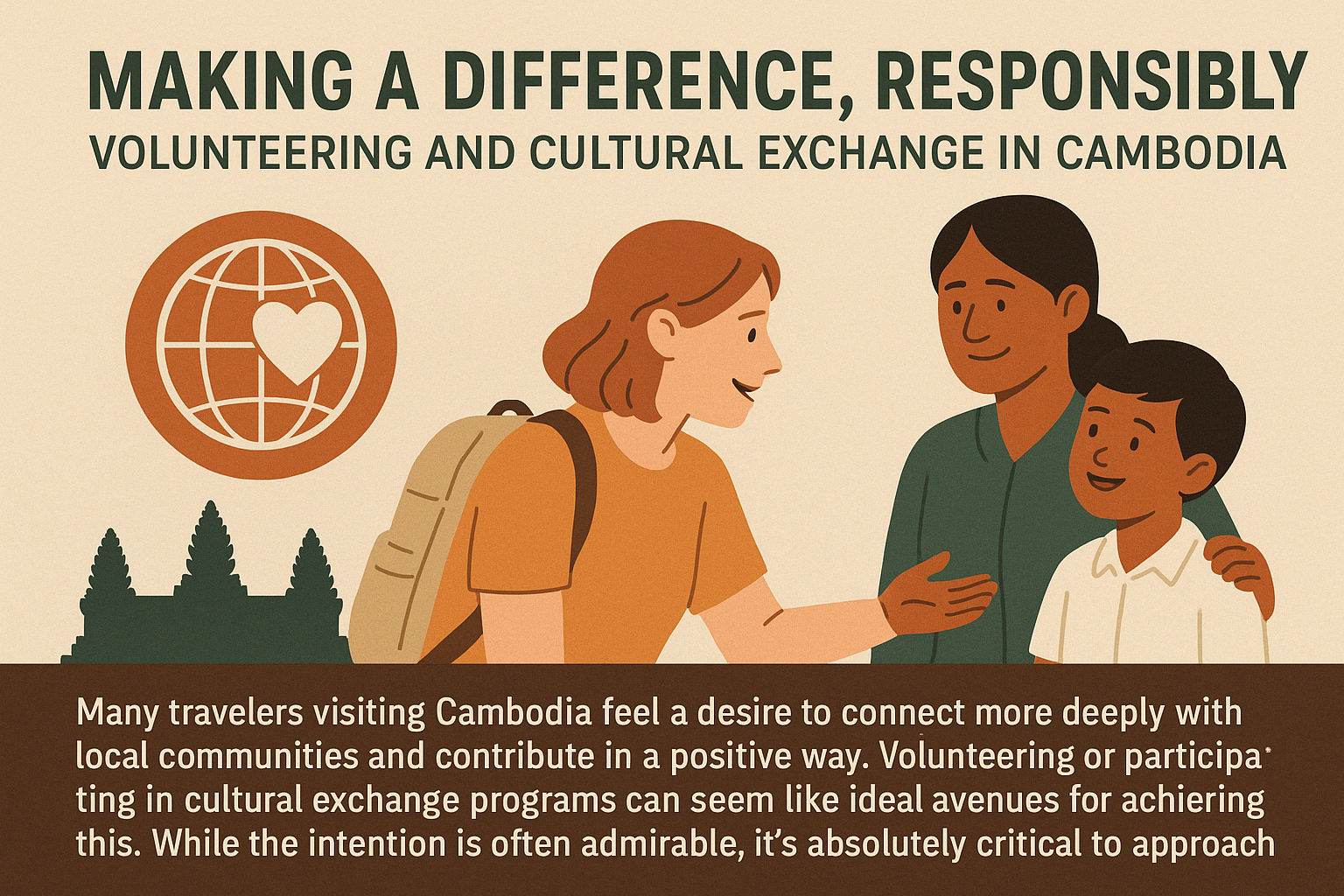For travelers seeking more than ancient ruins and bustling cities, Cambodia, a nation deeply rooted in Theravada Buddhism, offers opportunities for spiritual exploration and meditation practice. While perhaps less known for large, internationally-focused retreat centers compared to neighbouring Thailand, Cambodia provides unique avenues for those wishing to delve into mindfulness, stay in monasteries, or respectfully participate in temple life. Engaging in spiritual tourism here requires careful planning, cultural sensitivity, and a genuine intention to learn and practice.
Seeking Serenity: Finding Authentic Retreats
The landscape for formal meditation retreats specifically catering to foreign visitors in Cambodia is less developed than elsewhere in the region. However, options do exist and may include:
- Dedicated Meditation Centers: A small number of centers, sometimes located near major cities like Phnom Penh or Siem Reap, may offer structured Vipassanā (insight meditation) retreats, often taught by Cambodian or international teachers. These typically involve intensive periods of silent sitting and walking meditation, following a set schedule. Researching current offerings online through Buddhist directories or mindfulness networks is essential.
- Pagoda-Based Opportunities: Some larger pagodas (wats) known for meditation practice might occasionally host retreats or allow dedicated individuals (often with prior connections or arrangements) to practice alongside the monastic community. This often requires more self-direction and potentially Khmer language skills.
- Workshops and Courses: In urban centers, certain monks, nuns, or lay practitioners may offer introductory meditation workshops or shorter courses, providing a less intensive way to learn basic techniques.
Finding the right fit requires diligent research based on your experience level, language abilities, desired intensity, and length of stay.
Life Within the Walls: Staying in a Monastery

For some, the idea of temporarily staying within a Cambodian Buddhist monastery (wat) offers a profound immersion. This is typically less of a structured “retreat” and more about observing and participating modestly in the monastic rhythm:
- Simple Living: Accommodation (kuti) is usually very basic, often a small private room or shared space with minimal furnishings. Facilities like bathrooms are typically shared and simple.
- Daily Schedule: Expect early rising (often before dawn) for chanting and group meditation, followed by the monks’ single main meal before noon. The day involves periods of personal practice, study, and potentially light chores contributing to the monastery’s upkeep. Silence or mindful speech is often encouraged.
- Adherence to Rules: Guests are expected to respectfully observe the monastic rules, including the basic five precepts (sila) at minimum (abstaining from killing, stealing, sexual misconduct, lying, and intoxicants), and potentially additional precepts depending on the stay. Modest dress is required at all times.
- Interaction: Opportunities for discussion with monks or nuns might arise, but should be approached respectfully, being mindful of their schedules, hierarchy, and rules regarding interaction between genders (especially for women interacting with monks). Language barriers can be a significant factor.
- Self-Reliance: Monastery stays often require a degree of self-discipline and adaptability, as formal instruction or constant guidance may not be available unless pre-arranged.
Mindfulness in Khmer Culture: The Role of Meditation

Meditation plays a central role in Theravada Buddhism as practiced in Cambodia:
- Monastic Practice: For monks and nuns, meditation (samādhi – concentration, and vipassanā – insight) is a core discipline for cultivating mental clarity, wisdom, detachment, and progressing towards enlightenment (nibbāna).
- Lay Practice: While daily, intensive meditation is less common among the general lay population compared to regular merit-making, offering alms, and listening to Dhamma talks, many devout lay Buddhists engage in meditation, especially during religious holidays (like Vassa, the rains retreat), Uposatha days (observance days), or later in life.
- Mindfulness (Sati): The principle of mindfulness – paying attention to the present moment without judgment – is encouraged as a way to bring Buddhist practice into everyday activities.
Respectful Participation: Joining Temple Ceremonies

Visitors are often welcome to observe and sometimes participate respectfully in temple life:
- Daily Chanting: You can usually sit quietly at the back of the prayer hall during early morning or late afternoon chanting sessions. Dress modestly and behave reverently.
- Festivals: During major Buddhist festivals like Pchum Ben (Ancestors’ Day), Meak Bochea, Vesak Bochea (Buddha’s Birthday), or Khmer New Year, temples are hubs of activity. Visitors can respectfully observe processions, food offerings to monks, sermon deliveries, and other rituals. Follow the cues of local worshippers regarding when to stand, sit, or sampeah.
- Offerings (Dana): Supporting the monastery through donations is a traditional way to make merit. Food can be offered to monks during their morning alms rounds (do so respectfully, following local custom) or prepared food brought to the pagoda before noon. Monetary donations should typically be placed in designated donation boxes.
Ethical Footprints: Considerations for Spiritual Tourists

Engaging in spiritual tourism requires heightened awareness and responsibility:
- Motivation Check: Ensure your intention is genuine spiritual learning and practice, not just exotic tourism or seeking cheap accommodation.
- Deep Respect: Treat the monastery, monks, nuns, and local worshippers with the utmost respect. Understand you are a guest in their sacred space and community.
- Strict Modesty: Adhere rigorously to the modest dress code (shoulders and knees covered) at all times within the monastery grounds.
- Follow the Rules: Be prepared to fully observe the monastery’s rules and schedule, including precepts, meal times, and periods of silence.
- Manage Expectations: Don’t expect hotel comforts, constant attention, or tailored tourist experiences unless participating in a formally organized retreat for foreigners.
- Appropriate Giving (Dana): Offer donations modestly and respectfully, understanding the principle of supporting the Sangha (monastic community) rather than engaging in a commercial transaction.
- Minimize Disruption: Be mindful of noise, movement, and electronic device usage. Avoid treating monastic life as a spectacle or backdrop for photos. Always ask before taking pictures.
Ripple Effects: Impact on Monastic Life

The increasing interest of foreigners in meditation and monastery stays can have mixed impacts:
- Potential Positives: Can provide much-needed financial support for monastery upkeep and community projects; fosters inter-cultural understanding and appreciation for Buddhism.
- Potential Negatives: Can disrupt the quiet, disciplined routine essential for monastic practice; may divert monks’ time towards hosting duties; potential for cultural misunderstandings or unprepared visitors causing offense; risk of superficial engagement if not approached with genuine intent.
Monasteries that receive foreign visitors often need clear guidelines and sometimes dedicated personnel or facilities to manage these interactions effectively.
Conclusion
Cambodia offers genuine opportunities for travelers seeking to explore Buddhist meditation and spirituality, whether through dedicated centers or immersive experiences within local monasteries. Success and mutual benefit depend heavily on the visitor’s preparation, respect for local culture and monastic discipline, realistic expectations, and sincere intention. Approached ethically and mindfully, spiritual tourism in Cambodia can be a profoundly enriching experience, offering insights into both the Dhamma and the heart of Khmer culture.



